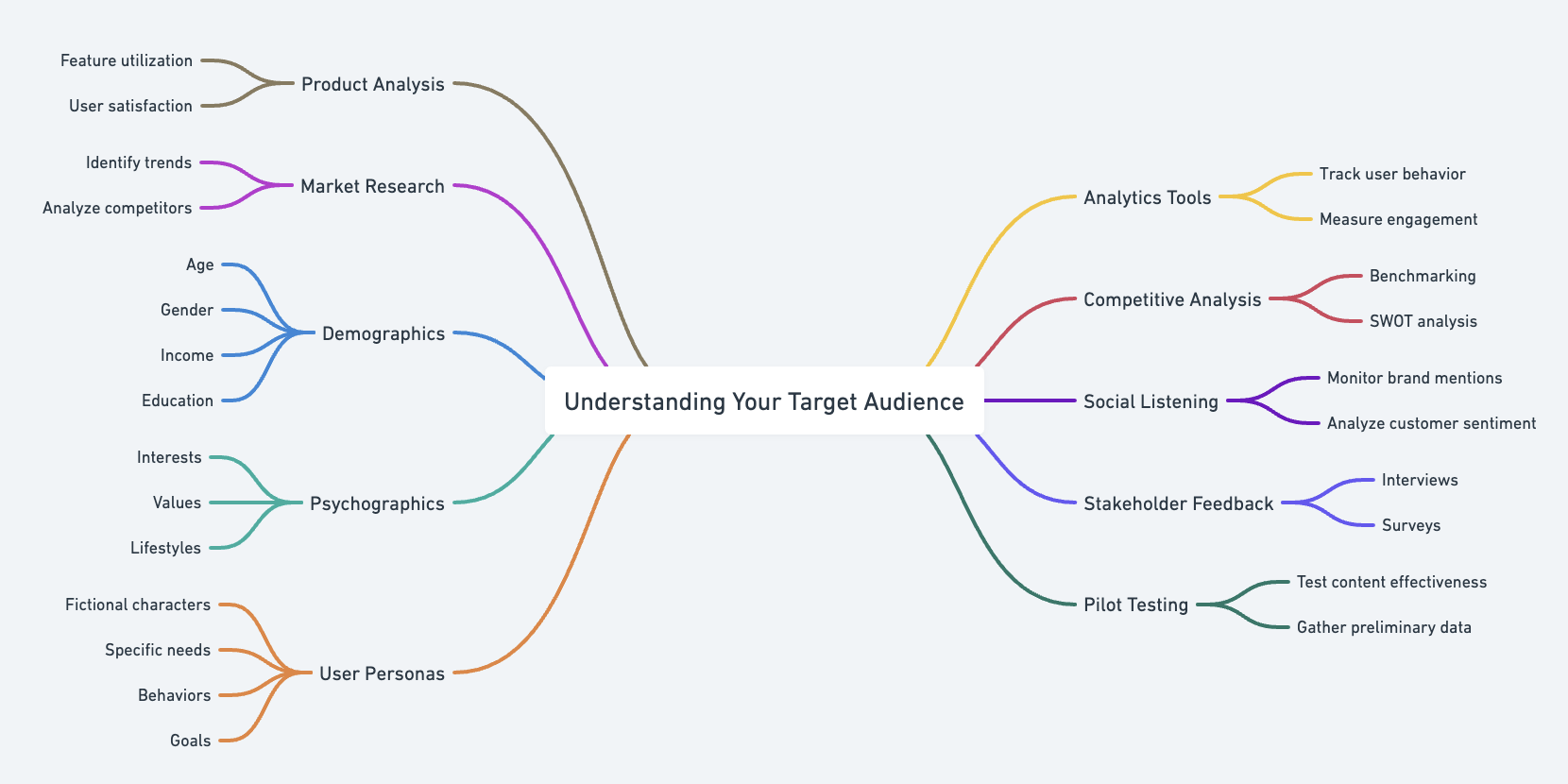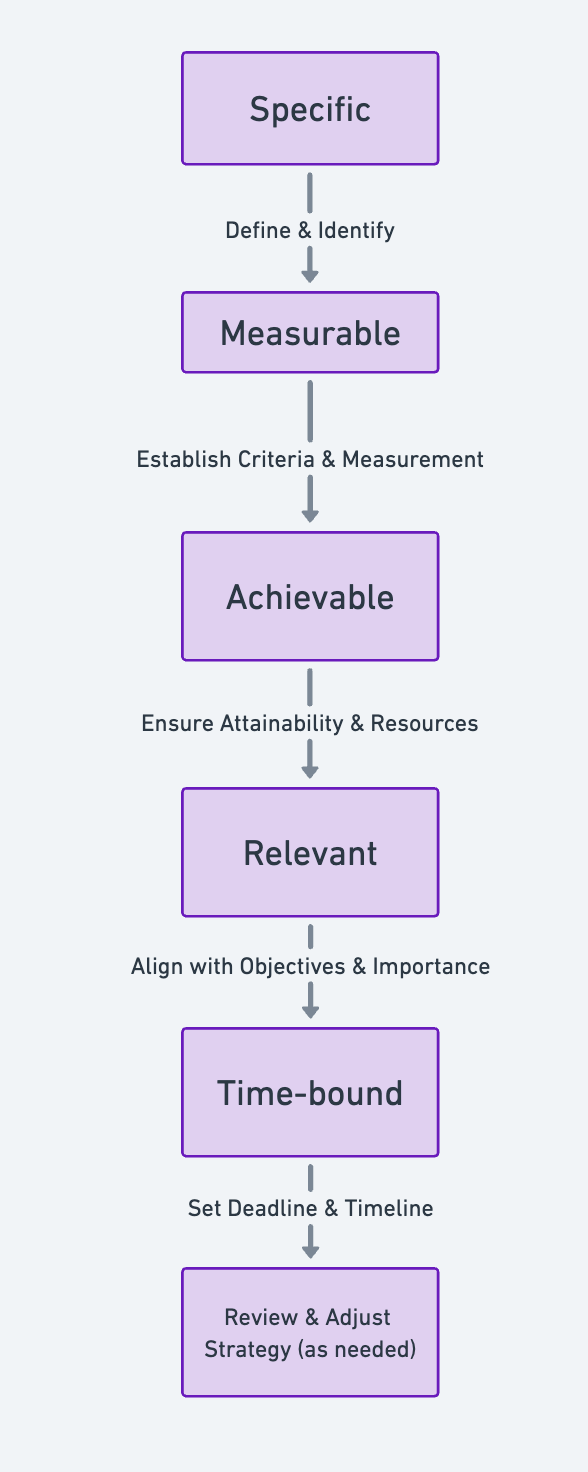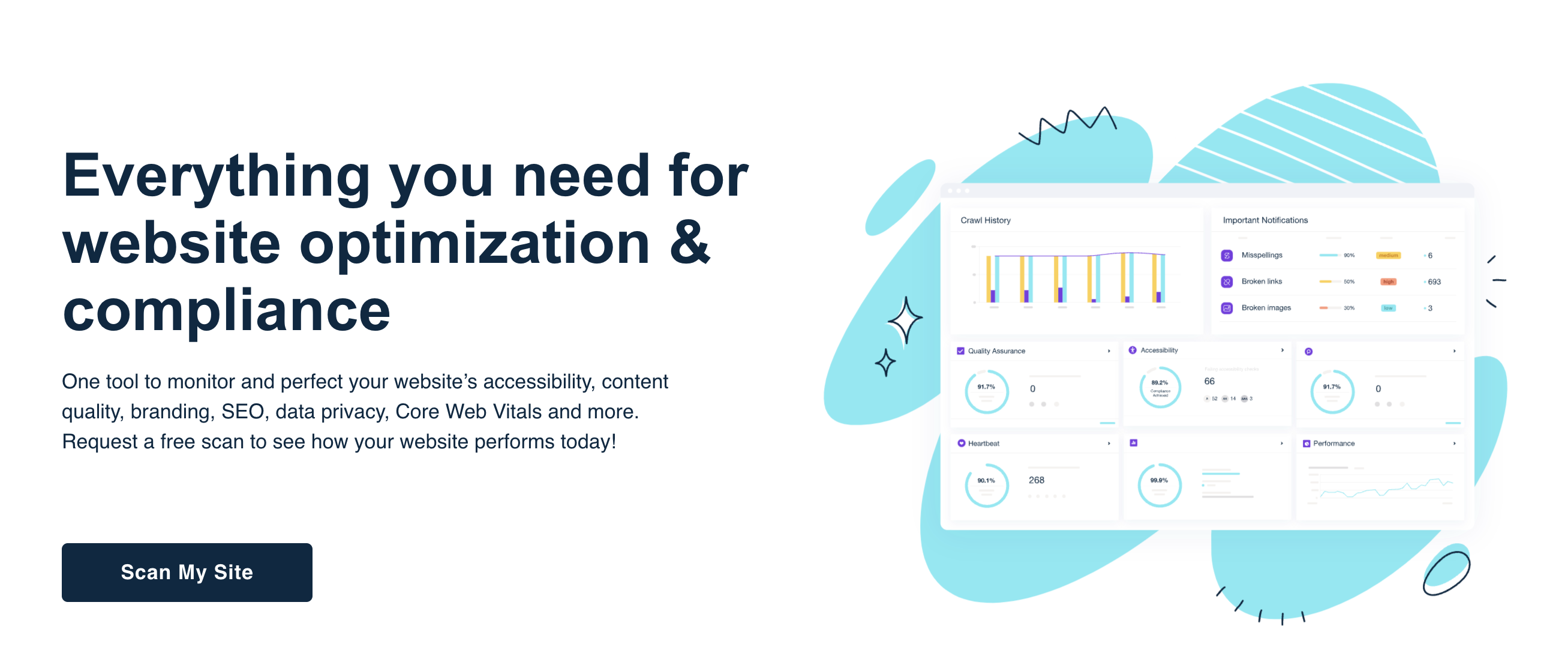Crafting A Winning Content Strategy for Your Drupal Site
- 20 minute read
-
Learn to develop an effective content strategy for your Drupal site with expert advice. Drive traffic, engage users, and boost conversions with strategic content planning.
Introduction
A content strategy is essential for any modern Drupal site as it aligns content with business goals, optimizes user experience, ensures quality and consistency, and leverages Drupal's advanced content management features for efficient governance and workflow management. Your organization’s content strategy will incorporate SEO best practices to amplify online visibility and prepare the organization for future digital trends and multi-channel distribution.
Ultimately, a well-crafted content strategy is a linchpin in transforming a Drupal CMS into a dynamic asset that supports engagement, lead conversion, and customer loyalty, thus driving an organization's digital success.
In this article we’ll look at some key objectives in the content strategy journey such as understanding your audience and setting goals; content planning and organization in Drupal; creating high-quality Drupal content; and finally, measuring success and iterating your strategy.
Understanding Your Audience and Setting Goals
Identifying the target audience for your organization's web application is a crucial step because it informs the design, functionality, content, and marketing strategy, leading to a more successful product. There are several ways in which your team can systematically identify the target audience.

1. Analyze Your Product or Service: Begin by thoroughly examining your web application. What problem does it solve, or what need does it fulfill? This analysis will give you insights into who might benefit the most from your app.
2. Market Research: Conduct market research to gather data on potential users. This can include surveys, focus groups, or analysis of market trends. Look at similar products in the market to understand who their users are and why they use these products.
3. Demographics: Identify demographic characteristics of potential users such as age, gender, education level, income, job role, and geographic location. For instance, a web application for financial planning might target middle-aged professionals with specific income levels.
4. Psychographics: Beyond demographics, consider psychographics, which are attributes related to personality, values, attitudes, interests, and lifestyles. Understanding your audience's psychographics helps tailor your app's user experience and marketing messages.
5. User Personas: Create user personas, which are fictional characters that represent the different user types that might use your application. Give them names, backgrounds, goals, and challenges. Personas help in making user-centered decisions throughout the development and marketing processes.
6. Use Analytics Tools: If you have an existing web application or website, use analytics tools to understand who is currently visiting your site, how they interact with it, and what content interests them. Google Analytics or similar services can provide a wealth of information.
7. Look at the Competition: Analyze your competitors' customer base. See who is using their services, read their customer reviews, and monitor their online communities. This can provide you with an idea of who might also be interested in your application.
8. Social Listening: Social listening involves monitoring social networks to understand what is being said about your niche or industry. Tools like Brandwatch or Hootsuite can help you gather insights about potential audiences interested in services like yours.
9. Feedback from Stakeholders: Speak with stakeholders within your organization, including customer service representatives, salespeople, and product developers, who can provide insights into who the clients are and what they require.
10. Pilot Testing: Conduct pilot tests of your web application with a small, representative segment of your potential audience. Collect and analyze feedback to refine your understanding of your audience. A pilot test can be formal or informal, where a small group of users or stakeholders are selected to test - or even simply discuss - the application in a real-world setting. The objective is to identify any issues that may arise during the user experience and improve the overall quality of the product.
Once you have identified your target audience, document your findings and regularly revisit them. Audience preferences and behaviors can evolve, and you will need to adjust your application and strategy accordingly. By taking a methodical approach to identify your target audience, you ensure your web application is well-positioned to meet user needs and achieve business goals. Now, when you start writing new content, or reviewing existing content, make sure it’s in line with at least one of these audiences.
Always Be Smart
Now you know your target audience and it's time to set some smart goals. S.M.A.R.T. (Specific, Measurable, Achievable, Relevant, Time-bound) goals for your organization's website content begins with defining clear objectives that align with your business strategy.

Specific goals require you to identify exactly what you want to achieve with your content. For instance, rather than saying "increase traffic," specify "increase traffic by attracting 20% more unique visitors monthly to our blog section."
Make your goals Measurable by attaching numbers or percentages to them to track progress concretely. Use web analytics tools to measure metrics like page views, session duration, or conversion rates. An example would be to "boost the conversion rate for sign-ups by 15% in the next quarter."
Ensure that each goal is Achievable; they should stretch your capabilities but remain attainable. Engage with your content team to assess resources and capabilities to support these objectives.
Your goals should be Relevant, meaning they have a direct impact on your business’s larger objectives. For example, if the business aims to increase leads, a content goal might be to "produce 10 new lead-generating articles per month."
Lastly, make your goals Time-bound by setting deadlines. This adds urgency and helps in prioritizing tasks. For instance, "increase the number of shared articles on social media by 30% by the end of the year." This structure ensures that your content goals are focused, trackable, realistic, aligned with your overall business objectives, and completed in a timely manner.
Now that you know your audience and have a clear vision of your business goals, start aligning content with user needs and business objectives. Brainstorm and craft content that addresses both user interests and your goals, such as informative blog posts for engagement or targeted landing pages for conversions.
Content Planning and Organization in Drupal
The next phase of your strategy - content planning and organization - are vital to marketing your website as they ensure the delivery of consistent, relevant content that engages your target audience and drives action. A well-structured content plan aligns with user search intent and business goals, improving SEO and user experience. It also streamlines content creation and distribution across channels, maximizing efficiency and impact. By organizing content thematically and strategically, you can guide visitors through a persuasive journey, building trust and encouraging conversions. Effective content planning thus amplifies online presence and fosters meaningful connections with your audience, ultimately boosting your marketing success.
In Drupal, content types and taxonomy among other native and add-on features provide a robust framework for content organization. Create distinct content types for different kinds of content such as blog posts, news articles, and product pages, which allow you to structure and display each type consistently. Alternately, blog posts and news articles can often use the same content type - but be differentiated using a select list or taxonomy. Taxonomy in Drupal lets you create vocabularies and tags to categorize content, making it more searchable and navigable. By tagging related content across various types, you enhance user experience by offering intuitive paths through relevant material. Leveraging these features, your content becomes organized, discoverable, and connected, facilitating better user engagement and a more cohesive content strategy.
Drupal has over 50,000 modules that you can research and utilize in your site to add to your content management functionality as well as features to help to plan and schedule publication of your content based on your organizations campaign strategies.
Creating High-Quality Drupal Content
High quality content - words, styles, and digital media included - are not only critical to an engaging, branded user experience on your organization’s site, but they are part of the modern algorithms used by Google and other popular search engines to rank results for SEO.
Work with your creative and technical teams to establish content quality standards. Some of the most important considerations are:
1. Relevance and Audience Alignment: Content must meet the needs and interests of the target audience. It should be pertinent to their queries and offer tangible value, whether through information, entertainment, or solutions.
2. Accuracy and Trustworthiness: High-quality content needs to be factually correct and reliable. Sources should be credible and verifiable, which helps establish the website as an authoritative figure in its niche.
3. Clarity and Readability: Content should be written clearly and concisely, with an appropriate reading level for the audience. Good use of headings, subheadings, and bullet points can improve comprehension and scanner-friendliness.
4. SEO Best Practices: Integrating SEO considerations—like keywords, meta titles, and descriptions—enhances content discoverability. When using images, the file name matters, and well-crafted alt attributes should always be used. Always consider that these strategies should be balanced with natural language to maintain quality for the end user.
5. Engagement and Interaction: The content should be engaging, fostering interaction, and compelling action. This could mean encouraging comments, shares, or conversions. High-quality content often includes calls-to-action and interactive elements like quizzes or polls.
6. Visual Quality and Presentation: Ensure digital media—such as images, videos, and infographics—used in the content are of high resolution, suitable for high-definition displays. Clear and professionally presented visuals enhance user engagement and contribute to a positive perception of your content's overall quality.
Some tried and tested techniques for creating engaging content are:
1. Understand and Address User Intent: Craft content that aligns with what your audience is seeking by conducting keyword research and user surveys. Deliver comprehensive answers to their questions, offer solutions to their problems, and provide unique insights that they can't find elsewhere.
2. Employ Storytelling Techniques: Use a narrative approach to make your content more relatable and memorable. Stories can evoke emotions, create connections, and make complex information more digestible. Incorporate real-life examples, case studies, and testimonials to add depth and credibility.
3. Interactive and Multimedia Elements: Integrate interactive features like quizzes, polls, and infographics, along with multimedia elements like videos and podcasts. These can increase user engagement, making the content not only informative but also enjoyable to consume.
SEO and Accessibility
When creating your content strategy and the new content itself, always keep in mind SEO and Accessibility. SEO and Accessibility are critical pillars in your content strategy because they ensure your content reaches the widest possible audience and complies with best practices and legal standards. SEO increases the visibility of your content on search engines, drawing more traffic to your site and connecting your content with users actively searching for information or services your site offers.
Accessibility, on the other hand, is about inclusivity, making sure that content can be used and understood by everyone, including people with disabilities. It not only expands your audience but also demonstrates social responsibility. Moreover, accessible websites tend to rank better on search engines, as many SEO best practices overlap with accessibility principles. Together, these strategies improve user engagement, conversion rates, and ultimately contribute to the success and growth of your organization's online presence.

Website Content Accessibility
1. Use Semantic HTML: Implement proper HTML tags (such as headings, lists, and sections) for content structure, enabling screen readers to navigate your website effectively.
2. Provide Text Alternatives: Offer alt text for images, transcripts for audio, and captions for videos, ensuring users with visual or hearing impairments receive the information.
3. Keyboard Navigation: Make all interactive elements accessible via keyboard by ensuring proper tab order and focusable elements, aiding users with mobility impairments.
4. Contrast and Colors: Ensure sufficient contrast between text and background colors. Avoid using color as the sole method of conveying information to assist those with color vision deficiencies.
5. Responsive and Flexible Design: Design your website to be responsive, meaning content is easily digestible on any device and screen size, and enable adjustments to text size and spacing to aid reading.
SEO Optimization
1. Keyword Research and Usage: Identify relevant keywords with strong search potential and incorporate them naturally into titles, headings, meta descriptions, and throughout your content.
2. Meta Tags and Descriptions: Write descriptive and engaging meta titles and descriptions to improve click-through rates from search engine results pages (SERPs).
3. Optimized URL Structures: Use clean and descriptive URLs that include targeted keywords and are easy for search engines to crawl.
4. Quality Inbound and Outbound Links: Build reputable backlinks and include valuable outbound links to authoritative sites to enhance your website's trust and authority.
5. Regular Updates and Fresh Content: Keep content up-to-date and publish new content regularly to signal that your website is current and providing value, encouraging search engines to crawl your site more frequently. Run periodic site crawls to catch any links going to broken pages so they can be caught and fixed as soon as they come up. URL structures should also accurately reflect sitemap location - a UX best practice.
It's also time to strategize and plan with your team for generative AI in search. Research around AI-powered search trends, Google's forthcoming Search Generative Experience in search engine results pages, and how these technologies and changes will affect your organic search results and traffic.
Measuring Success and Iterating Your Strategy
Now that you have a content strategy that is in the early stages of being mapped out, you will want to consider the long term. How will you measure your success, for example? What tools will you use to gain and measure insight into your strategy and results? And, of course, how can your strategy be improved over time?
Tools and Methods for Tracking Content Performance on a Drupal Site
To effectively track the performance of your content on a Drupal site, a combo of analytical tools and methods is essential. Google Analytics remains the industry standard for tracking various metrics, including user behavior, traffic sources, and on-site activity. For Drupal-specific insights, modules like Drupal's Webform for obtaining user feedback and the Google Analytics Reports module can provide detailed reports within the Drupal interface. Content performance can also be gauged using heatmapping tools such as Hotjar or Crazy Egg, which visually demonstrate how users interact with your website, highlighting areas that attract the most attention or might be causing confusion.
Analyzing Data to Inform Content Improvements
Armed with data from these tools, the next step involves delving into the analysis to uncover actionable insights. Using tools like Acquia Optimize can give you a better understanding of how your content is performing in search engine rankings, which in turn can inform SEO improvements. Techniques like A/B testing with platforms like VWO can further refine your content approach by revealing what resonates best with your audience. Data analysis involving user engagement metrics such as conversion rates, time spent on page, and bounce rates helps identify which pieces of content are performing well or need optimization.

Continuous Improvement: Updating and Refining the Content Strategy Based on Performance Data and User Feedback
The pathway to continuous improvement in content strategy lies in iterating based on a blend of performance data and user feedback. For a data-driven approach, tools like Tableau or Google Data Studio can help in visualizing performance trends and crafting narratives out of data, facilitating strategic decisions. The GatherContent platform can assist in managing the workflow of content updates and implementing refinements. Collecting user feedback through surveys, using tools like SurveyMonkey or Qualaroo, can also provide direct insights into user satisfaction and areas for improvement. This cycle of review, analysis, and update enables a content strategy that evolves with your audience's needs and the shifting digital landscape.
Conclusion
In the realm of digital presence, a well-crafted content strategy is the linchpin for success. The key takeaway from our exploration is that tracking and analyzing content performance is not just beneficial; it's essential. By leveraging industry-standard tools like Google Analytics and Drupal-specific modules, you gain a deep understanding of user engagement and content effectiveness. Delving into analytics with tools like SEMrush allows for SEO fine-tuning, while feedback platforms keep a finger on the pulse of user satisfaction. Embracing continuous improvement ensures that the strategy doesn’t stagnate, adapting instead to the ever-evolving digital landscape and audience expectations.
Implementing these strategies does require effort and dedication, but the payoff is substantial. With commitment and the right tools in hand, your organization's web content can not only reach but resonate with your intended audience, propelling your digital goals forward. Remember, each piece of content is an opportunity to engage, convert, and delight users, ultimately creating a robust, dynamic online presence.
For those seeking further guidance in refining their Drupal content strategy, professional help is just a step away. Your Account Manager is equipped to provide targeted advice and support, and services like Acquia Professional Services offer a higher level of expertise, with comprehensive solutions tailor-made for your content needs. With these resources at your disposal, the path to a successful content strategy becomes clearer, imbued with expert insights to bolster your efforts. Investing in content strategy is investing in the future of your organization—meticulous, yes, but well worth it over time for the measurable impact on your organization’s growth and success.






